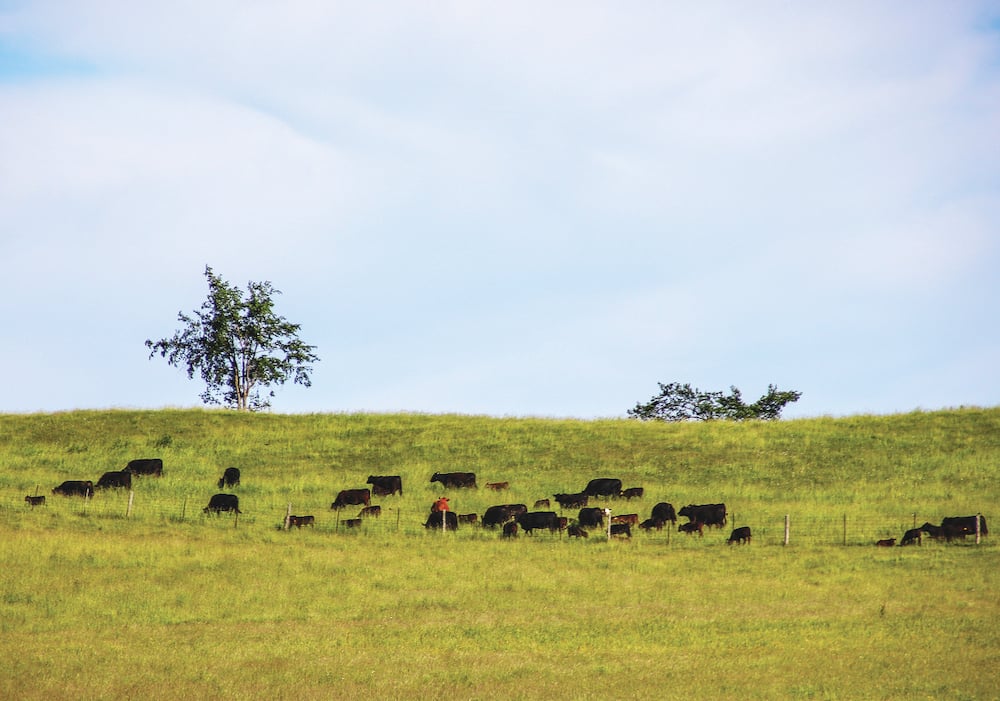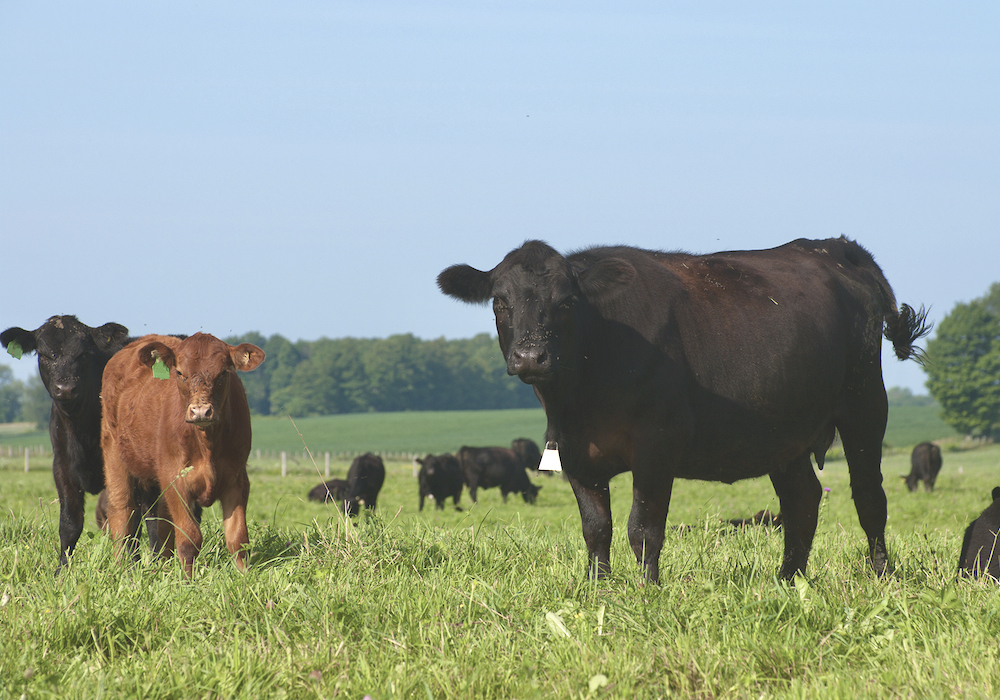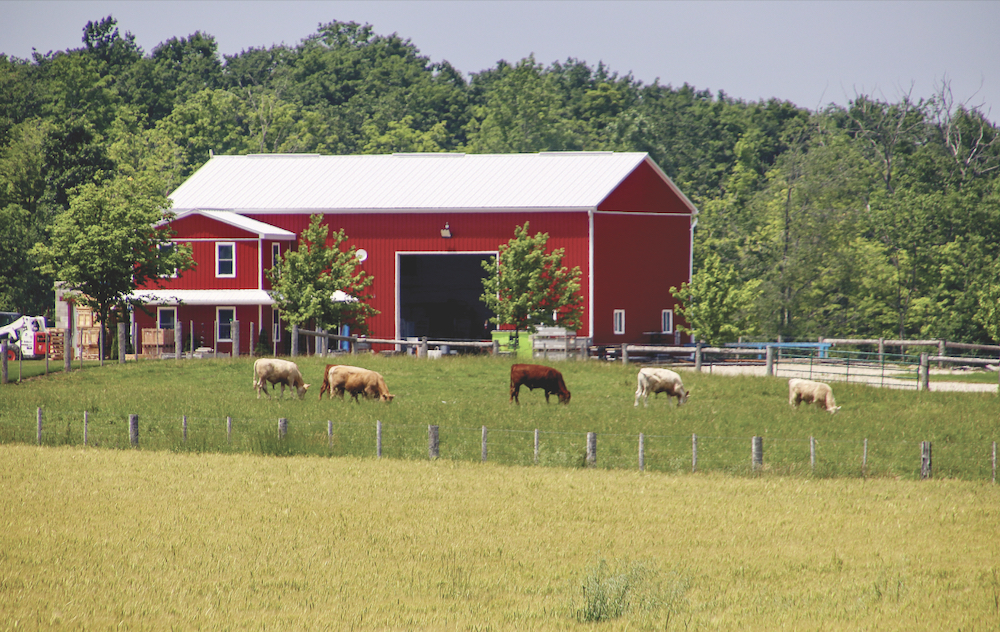Attainable solutions could keep cows on Ontario land

Ontario consumers are buying more imported beef in part because the growth of the province’s cow herd is stagnant and can’t keep up with demand.
Read Also

Ontario beef brand rebuilds Asian markets post-COVID
Last year was tough for Ontario’s beef exports as supply chains were rebuilt post-COVID and a port strike in Vancouver…
A panel of experts addressed the challenge of keeping cattle on Ontario land with attendees of Grey Bruce Farmers’ Week Beef Day earlier this month.
“I’m 100 per cent for (maintaining farmland),” said panelist Steve Duff, Ontario Ministry of Agriculture, Food and Rural Affairs chief economist.
“However, the one thing I think that gets missed a lot in the discussion is what exactly is the land that is farmed versus the land that we could farm.”
Why it matters: Record corn and soybean prices drawing marginal land into grain production, alongside limited access to Crown land, is hampering growth of Ontario’s provincial cattle herd.
Duff explained a critical aspect of keeping cows on the land is how cow-calf production fits a family farm’s circumstance and future expectations, as well as market opportunities.
Community pastures and Crown land access could drive herd growth, said Duff, noting north, central, and eastern Ontario possess the largest amount of unfarmed land assessed for farming, according to the most recent Census of Agriculture (2021). They are also regions where the average cost of purchasing or renting land is the lowest.
“How do we use that to incent a relatively stable cow-calf industry or cow herd? To both stay on the land but also come out?” he questioned, adding the Census reflects land productivity, the number of farmers, and land not utilized for cropping – yet.
“We convert land into hay and pasture and then back into cropland,” Duff said. “But returns are tightening, and they have been tightening fast.”
Despite this, Ontario’s 9.5 million acres of evolving “crop landscape” have witnessed land rotation in and out of production from pastureland into hay or crops and sometimes urban development.
“We are at a point in Ontario agriculture where the business of buying farms and paying for them with their production is probably over,” said Christoph Wand, OMAFRA livestock sustainability specialist and panel host.
“And we’re probably into an era where it’ll be more like European land ownership and frankly separate from the agricultural business.”

photo:
Diana Martin
Robert McKinley, a fifth-generation Grey County cow-calf producer, said planting cash crops and raising cattle are two different skills and collateral damage of a push towards cash cropping is the cattle industry losing valuable players.
“To me, diversity equals stability, so the more people we can have in the industry, the better,” McKinley said.
“I think there’s a lot of hard-earned lessons out there that we need to value. It’s always good to have new blood in the industry and new energy coming in.”
Established operations offer a wealth of knowledge, which he believes will follow the natural progression of providing mentorship and transitioning opportunities to those who want to farm.
“Some of these young people can make use of that land and the infrastructure built by the generations before us to continue (and) keep producing the highest quality product in Ontario,” said McKinley. “We’ll come to a new equilibrium, but it’s very scary seeing all this good livestock land getting gobbled up.”
McKinley, who operates Silver Spring Farms with his family, integrated value-added sustainability into the cow-calf and cash-crop operation to combat declining land availability, rising costs, and feed storage infrastructure pressures.
They acquired affordable and available land on Manitoulin Island, where 100 cows winter on a well-drained active sandpit, calve unattended on cedar sand hills, and graze well-established grasslands in summer.
Calves are retained, backgrounded, and moved into the Northern branded program.
Cover crop grazing a mix of cereals following winter wheat, including harvesting a red clover crop for forage this year, for little cost to the operation, helps sustain the home-farm herd, provides excellent wintering grounds and nutrient dispersal when he moves hay across the field.
“(If the cover crop is) a feed source you want to rely on, you have to treat it like a crop and drill it and have fertility and maybe a fungicide on it,” McKinley said.
“Another way we’ve tried to keep the nutrients on the fields is by grazing corn stover.”
In addition to diversifying into bred heifers, yearling bulls, and a new embryo recipient program, technology plays an increasingly critical role in pregnancy checks, colostrum testing to ensure calf immunity, and feed testing for accurate nutrition tracking.
The panel’s upfront answer was “no” when asked if traditional cow-calf pasture pencils out on 200 bushels per acre of corn ground.
McKinley suggested value-added cover crops and corn stalk grazing is an option, while Dr. Peter Kotzeff suggested strip-grazing cattle on pre-harvested corn, as he does in September, and uses corn stalks as feed afterward.
“At 10 pounds of grain per head, per day, you can probably generate $1,500 at today’s prices worth of grazing from an acre of land without any harvesting costs,” Kotzeff said.
Kotzeff evolved a high-risk sale barn cattle operation into a more holistic 150 cow-calf pair grazing management system on his 2,200 acres cow-calf/cash crop operation in Bruce County along the Saugeen River.
“My responsibility is to try to integrate cattle grazing minimal tillage, cover crops, and sensible crop rotations to minimize erosion, improve health and water quality,” said Kotzeff.
He runs three 45-head cow-calf herds on a 55-day breeding season where cows calve unsupervised, offspring are weaned in March, and the sold as yearlings.
He uses a turnip, oat, and pea cover crop to supplement grazing.
“Holistic grazing improves the soil and crop rotation, in my opinion,” he said, providing grazing management on steep ground and converting heavy clay pasture to soybean as two examples. “And grazing cover crops reduces cattle feed costs.”
Duff said Ontario’s cow herd had declined significantly over the years but is now relatively stabilized. Though consumers eat the same amount of protein and beef as 25 years ago, approximately 35 per cent of beef comes from outside of Ontario.
Wand asked how dairy crossbred beef stacks up against straight-bred beef and its impact on the sector.
“I think there’s a place in the market for both, and I don’t think it’s going to push us out,” McKinley shared. Adding the extra health costs and lower feed conversions of dairy crossbreed could impact initial uptake and see a return to straight beef.
Duff said keeping Ontario calves in Ontario’s sector is a win despite challenges and pricing issues in creating a different product.
“I think it’s a necessary evolution of where we’re going in a market where we don’t have enough calves to begin with,” he explained.
Producers need to be open to incorporating it into the existing market, which takes time.
McKinley said the most significant industry challenge is insufficient communication between producers and end users to make better genetic selections and improve the industry.
“The guy buying our finished animals, they’re coming back to us and having a discussion with us on the genetics we’re using on our operation,” he explained. “They’re chasing marbling and carcass characteristics, and we’re very happy to produce a calf that’s going to meet their goals.”
Kotzeff said Ontario beef producers must reduce costs, improve fertility, and tighten calving intervals to compete with lower-cost North American producers who don’t have the same overhead.
“I don’t think there is a positive return on investment in the cattle business, except when it’s integrated with the rest of my operation,” he said.
“The benefits we’ve talked about already are the ones that offset those other (costs).”
Duff said if producers continue to think outside the box about how and where cattle pasture is, it will develop a stronger recipe for producing calves that meet feedlot needs, perhaps on a smaller scale on cheaper land, that dovetails into environmental sustainability.
“It may not be the traditional way that we grew up wanting to do, but it’s where you ended up,” said Duff. “There’s a lot of opportunity there in the sector, but it takes a different way of approaching the world.”
Source: Farmtario.com

